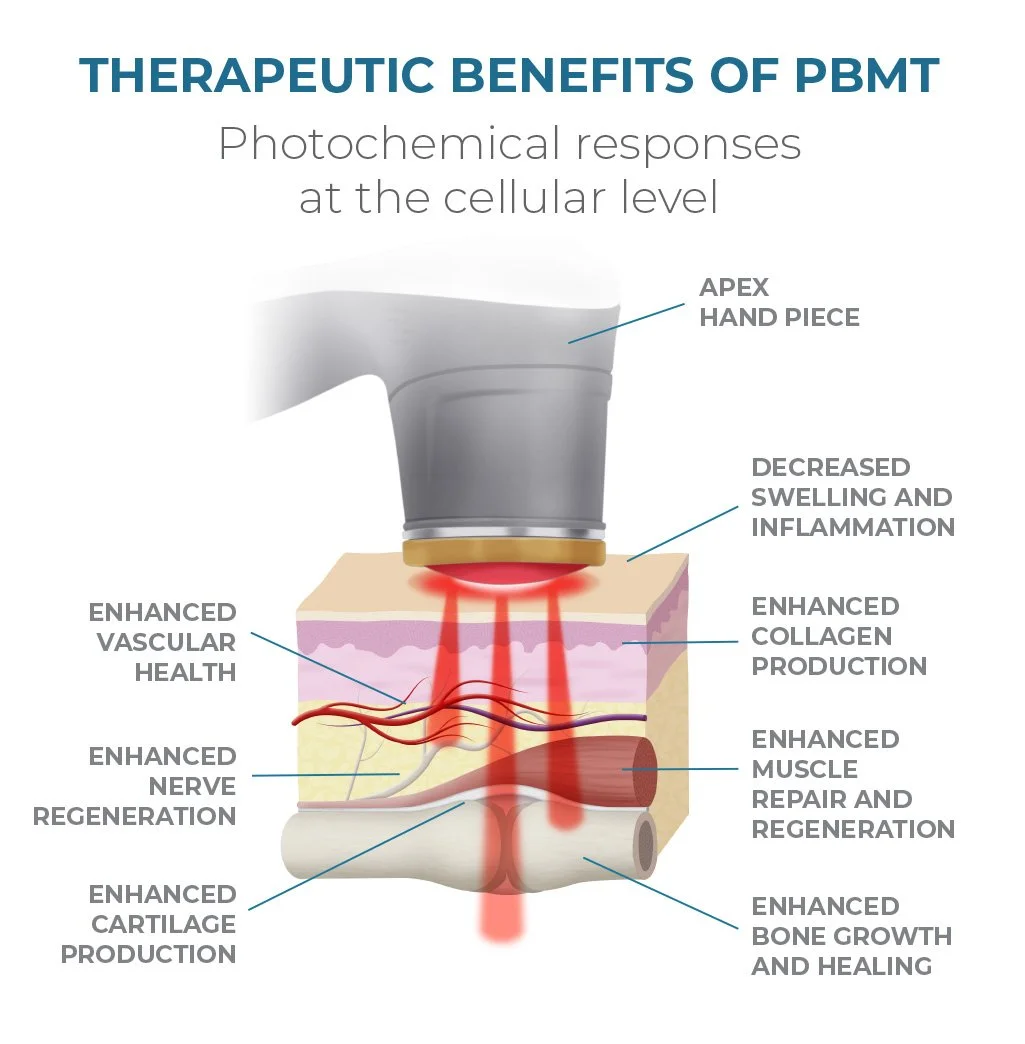And why the Aspen Apex? The world’s first and only laser device of its kind, the Apex Quad-Wave Laser Series is changing the way health care professionals are treating pain and injuries. Uniquely featuring four wavelengths of 670nm, 810nm, 980nm and 1064nm, the Apex Quad-Wave incorporates 15 watts of high power for each of its three infrared wavelengths and adds another 2 watts of red wavelength for a combined total output of 47 watts. Protected under law by patent, there is no laser on the market quite like the Apex Quad-Wave Series. The bottom line? Enhanced and consistent clinical results not seen in other laser systems.
Here are some of the scientific details:
670nm Wavelength
The most commonly and effectively used wavelength for red light therapy is 670nm, which allows for deep penetration primarily into the skin and tissues, promoting blood flow, wound healing, and skin beautification. The red light allows for significant effect on mitochondrial stimulation, which increases the production of ATP and in turn, boosts fibroblast activity.
810nm Wavelength
The 810nm wavelength allows rapid activation of the hemoglobin oxygenation process: transferring the correct energetic supply to muscles and tendons, facilitating regeneration. Clinical studies indicate that 810nm largely affects mitochondrial cytochrome c oxidase by increasing cytosolic calcium while decreasing mitochondrial calcium. This helps reset dysfunctional tissues such as muscles, tendons and ligaments.
980nm Wavelength
The 980nm wavelength optimizes the action on thermal and mechanical receptors for a rapid analgesic effect, resulting in improved pain control, circulation, and muscle relaxation. Clinical studies indicate that 980nm primarily affects temperature-gated calcium ion channels.
1064nm Wavelength
The 1064nm wavelength is a longer wavelength that can penetrate deeper into tissue. Clinical studies indicate that it has the least dispersion within biological tissues due to its decreased melanin absorption. The result is a deeper activation of metabolic processes vital for all cellular activities.

